Heimat: roughly translates as ‘home’. Dual meaning that referred both to one’s country, as well as one’s home region or town. German soldiers could therefore argue that they fought for multiple ‘homes’ during the war.
Hilfswillige: volunteer, literally ‘willing to help’. Denotes Soviet citizens and primarily prisoners of war who served in the ranks of the German army during the war.
Jagdkommando: special ad hoc units assembled by various German formations to carry out anti-partisan sweeps.
Kaiserheer: Unofficial name for the German army between 1871 and 1918. Official names were the ‘ Deutsche Heer ’ (German Army) and the Reichsheer (Imperial Army).
Manneszucht: Older German term for discipline, mainly used in the military arena, connecting discipline to masculinity.
Reichsführer-SS: Created in August 1934 as highest rank of the SS.
Reichswehr: German armed forces of the Interwar Period, officially renamed Wehrmacht on 1 June 1935.
Weltanschauung: A belief system (literally: world view) usually used to denote an ideological programme.
Winterhilfswerk: Winter Relief of the German People. This was an annual charitable collection carried out by the Nazi state to help finance the state-run charity, the National Socialist People’s Welfare Organization.
Volk: roughly translates as ‘people’, though it has multiple meanings. During the Third Reich, the term was used to denote an ‘ethnic people’ who constituted a distinct nation with equality of all members ( Volksgemeinschaft ). Linked to notions of rootedness in the soil and thus permanence.
Appendix B
Organization of a German Infantry Division Staff
Divisional commander: Responsible for the command and condition of the division.
Command section ( Führungsabteilung )
Ia : First General Staff Officer and deputy of the divisional commander (staff above the divisional level had a separate deputy commander, the Chief of Staff). Supported the divisional commander in the deployment and command of the division and led the staff work of the divisional staff. Supported by the O1 (First Ordonnance Officer), who wrote the divisional war diary and kept the command papers (i.e. maps) updated.
Ic : Third General Staff Officer. Responsible for Intelligence and Counter-intelligence, but also for troop care until the creation of a special troop welfare staff officer ( Divisions-Betreuungs-Offizier ). Supported by the O3 (Third Ordonnance Officer) and one or more interpreters.
The command section also included the divisional map section, a motorcycle platoon and officers advising the divisional commander about their arms, such as the commander of the artillery regiment for artillery questions.
Personal group of divisional staff section ( Adjutantur )
IIa : Divisional adjutant, responsible for personnel affairs of the division’s officers .
IIb : Responsible for personnel affairs of the rank and file as well as for the divisional staff office.
III : Divisional martial court. Also worked on requests for judicial assistance from civil courts, i.e. divorces.
Filing department ( Registratur ): Responsible for receiving and distributing orders and other documents and administering classified files.
Commander of the divisional headquarter ( Kommandant des Stabsquartiers ): Responsible for exploring, establishing and securing the divisional headquarter and command post.
Quartermaster Section ( Quartiermeisterabteilung )
Ib : Second General Staff Officer, responsible for the complete logistical affairs of the division, including supply, POW transfer to rear installations, management of traffic and air protection in the rear area. Supported by the O2 (Second Ordonnance Officer).
Ib/WuG : Officer for weapons and equipment, responsible for supply and maintenance of weapons, ammunition and equipment except for special equipment such as that of engineers or medical services.
Ib/Kfz (or V ): Divisional engineer, responsible for motor vehicle park, including spare parts and fuel supply.
IVa : Divisional intendant, responsible for supply of rations, fodder, clothes and individual equipment. Also responsible for gaining resources from occupied territory.
IVb : Divisional physician. Responsible for the deployment of the medical units, transport and care of wounded, hygiene and preventive measures for the troops and possibly civilians in the divisional area, supply of medical equipment.
IVc : Divisional veterinary, responsible for divisional horses, the butcher company and for food safety.
IVd : Chaplain ( K = Catholic, P = Protestant, depending on the division’s origins). Spiritual care for the troops.
IVz : Divisional paymaster, responsible for the field pay office.
With the quartermaster section were also the Divisions-Nachschubführer ( Dinafü ) (divisional supply leader) with his staff, the leaders of the baggage trains, and the divisional Army Postal Master.
Appendix C
Table of units and their size
Note: the numbers given of men and material are authorised strengths. After the start of the war in the East, most units never approached these strengths again. From 1942 on, most units reached only 50-75% of the authorised manpower strength. The same was true with material, but here numbers of tanks were often lower due to maintenance problems.
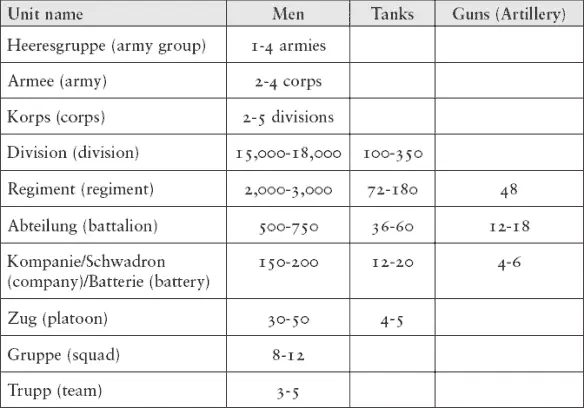
Appendix D
Table of ranks
Note: The Luftwaffe (Air Force) and the Kriegsmarine (Navy) had a similar structure to the Army, but while the Luftwaffe used more or less the same names, the Kriegsmarine had very different rank names for traditional reasons.
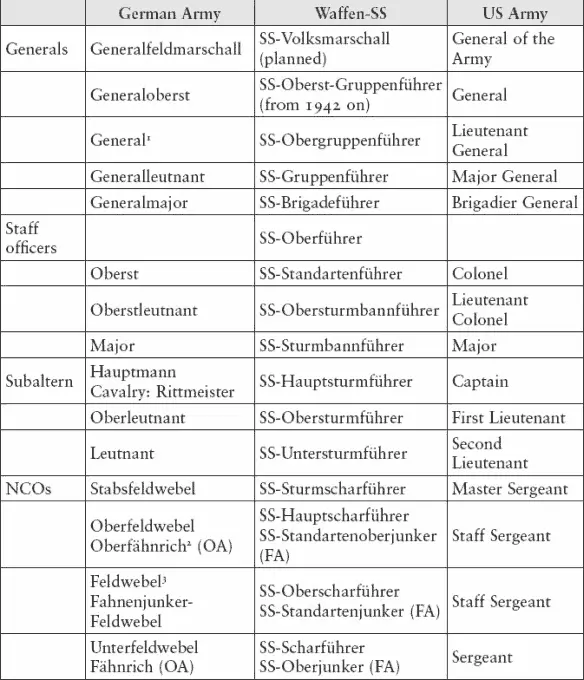
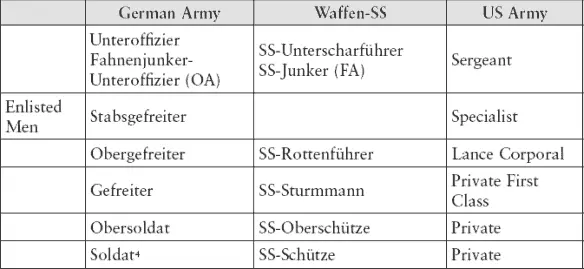
OA/FA: Offizieranwärter (Army)/Führeranwärter (SS) = Ranks for Officer candidates.
General [1]
Oberfähnrich [2]
Feldwebel [3]
Soldat [4]

German engineer company marching in the Ukraine, summer 1941. The endless plains of the Soviet Union forced German troops to undertake long marches that exhausted the infantry. (BAMA RH 26-76/21)

German engineers crossing the Dnieper by force, summer 1941. Broad Soviet rivers proved difficult obstacles to overcome for German troops. (BAMA RH 26-76/21)
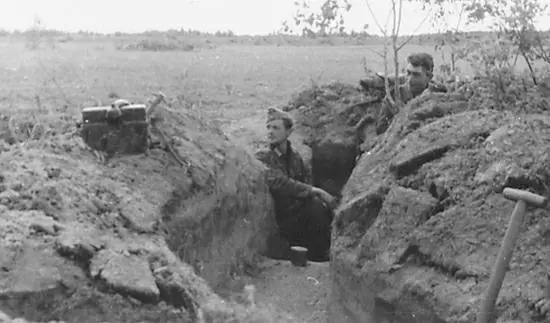
German trench near Naumovka, Velizh area, 1943. Beginning in early 1942, large sections of the front reverted to positional warfare – a strategy that needed to be relearned by the German army. (BAMA RH 26-205/94)

Troops of the 371st Infantry Division in a bottleneck at a river crossing during the breakout from the Kamianets-Podilskyi encirclement, March 1944. Note the various uniforms as well as the many horse-drawn vehicles. (Private archive of Marco Sigg)

Units of the 371st Infantry Division during their retreat in southwestern Ukraine in February 1944. Harsh weather conditions hampered troop movements and had negative effects on the troops’ health. (Private archive of Marco Sigg)

German infantry supported by an assault gun advancing in open order in the Ukraine, summer 1941. Combined arms were an essential part of German tactical success. (BAMA RH 26-76/21).
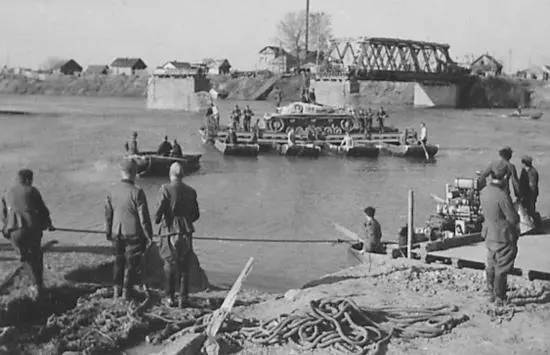
Ferrying of an assault gun over the Kasplia River (Vitebsk area), spring 1942. (BAMA RH 26-205/94)

An assault gun passing a horse-drawn column, Ukraine 1941. One of the German army’s fundamental problems was the lack of adequate means of supply for the rapidly advancing Panzer troops. (BAMA RH 26-76/21)
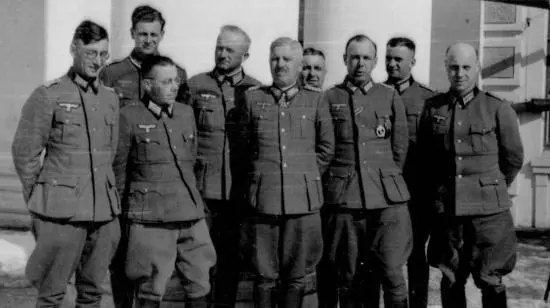
Part of the staff of the 385th Infantry Division in April 1942, Ukraine. The divisional commander Generalmajor Karl Eibl, the twenty-first soldier of the Wehrmacht (and second of the army after Erwin Rommel), decorated with with Swords to the Oak Leaves, died six months later during the Soviet winter offensive after being accidentally wounded by Allied Italian troops during a frontline reconnaissance. (Private archive of Marco Sigg)
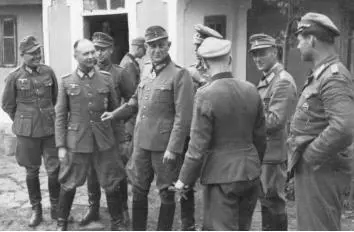
Generalleutnant Hermann Niehoff (centre), best known for his command of besieged Breslau in 1945, during his staff’s celebration for receiving the Knight’s Cross, late June 1944. He earned the award for his command of the 371st Infantry Division during the breakout of First Panzer Army from the Kamianets-Podilskyi encirclement. (Private archive of Marco Sigg)
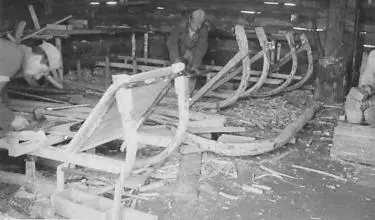
Improvised sled production by a German supply unit, autumn 1942. The German troops started preparing for the second winter in the Soviet Union much earlier than in 1941 – a lesson learned after the high casualties and breakdown of the supply system. (BAMA RH 26-205/93)

Construction of a log causeway, central Russia, 1942. Warfare in the generally undeveloped forest and swamp regions of central and north Russia forced the German army to build its own infrastructure. However, the lack of men, machines, and material only allowed for makeshift solutions. (BAMA RH 26-205/94)
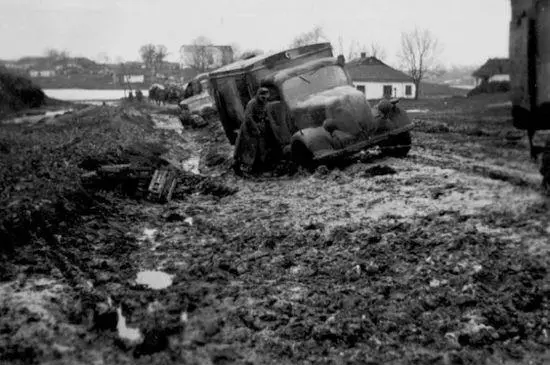
Soldiers try to pull a truck that has slid off the road, Ukraine 1944. The road conditions, especially after rains or in the thaw period, hampered German movement and supply. (Private archive of Marco Sigg)
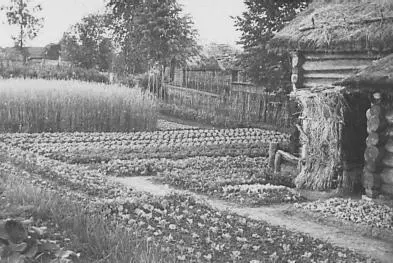
Garden of a German supply unit. Due to difficulties in the logistical system, self-supply became essential for German troops. (BAMA RH 26-205/93)
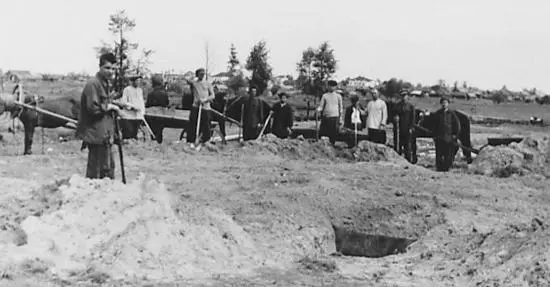
Soviet civilians building positions near Velizh, 1943. The longer the war endured, the more the German army had to rely on Soviet manpower for auxiliary tasks. (BAMA RH 26-205/94)
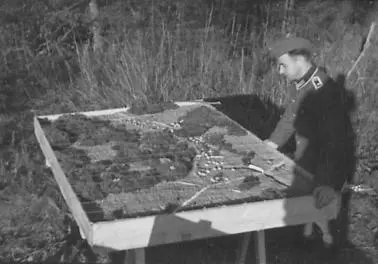
A German NCO prepares tactical training on a sand table, 1942. The level of detail demonstrates the degree to which the German army sought to train men and leaders even under the difficult conditions of the Eastern front. (BAMA RH 26-205/94)
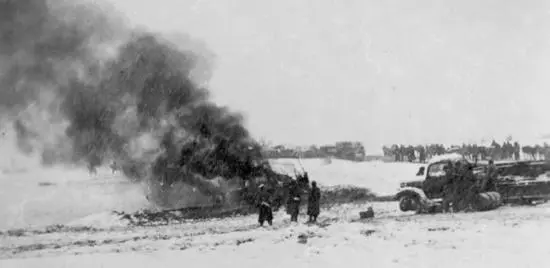
Destruction of an abandoned truck on the German retreat in the Ukraine, March 1944. Long retreats under difficult conditions not only caused the German troops to suffer materially, but also affected their combat morale. (Private archive of Marco Sigg)
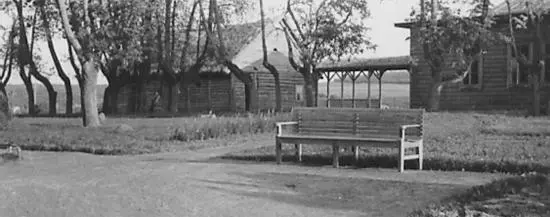
Recreation home of the 205th Infantry Division in Baslovo, 1942. A peaceful area that allowed German soldiers to recuperate from the horrors of the front line. (BAMA RH 26-205/93)
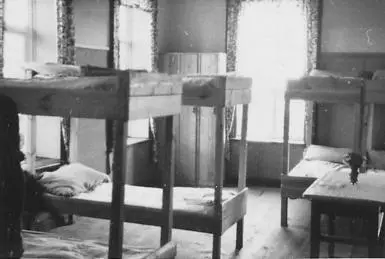
Sleeping room in the recreation home of the 205th Infantry Division in Baslovo, 1942. Even if very Spartan from a modern perspective, it was luxurious compared to conditions on the Eastern front. (BAMA RH 26-205/93)
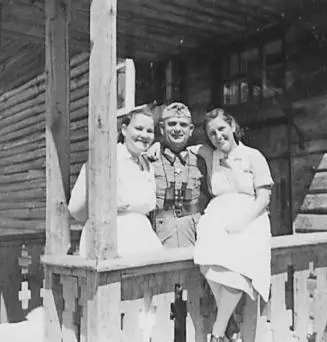
The ‘attraction’ of the 205th Infantry Division’s recreation home: two German Red Cross Sisters. German women were rarely seen in the German-occupied Soviet Union. (BAMA RH 26-205/93)
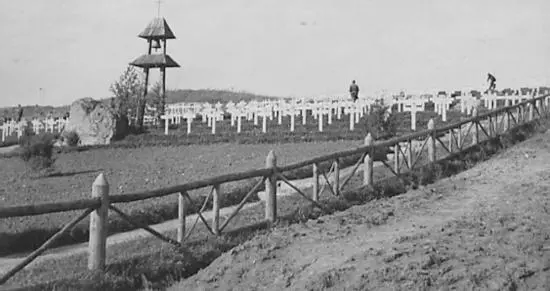
Cemetery of the 205th Infantry Division in Novosokolniki area, 1942. Burying comrades in proper circumstances – when possible – was an important hygienic measure and proved essential for combat motivation. (BAMA RH 26-205/93)
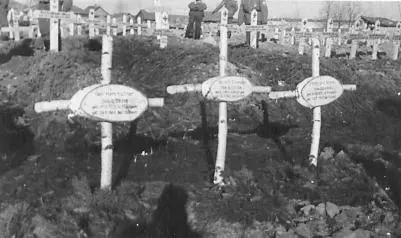
Makeshift graves of German soldiers killed in action against Soviet partisans, spring 1942. (BAMA RH 26-205/94)
Note: We gratefully thank Dr Marco Sigg for offering us pictures from his private archive.
Читать дальше
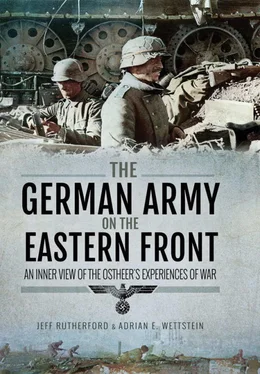

























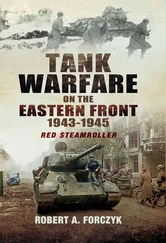
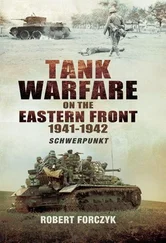



![John Stieber - Against the Odds - Survival on the Russian Front 1944-1945 [2nd Edition]](/books/405234/john-stieber-against-the-odds-survival-on-the-russian-front-1944-1945-2nd-edition-thumb.webp)





